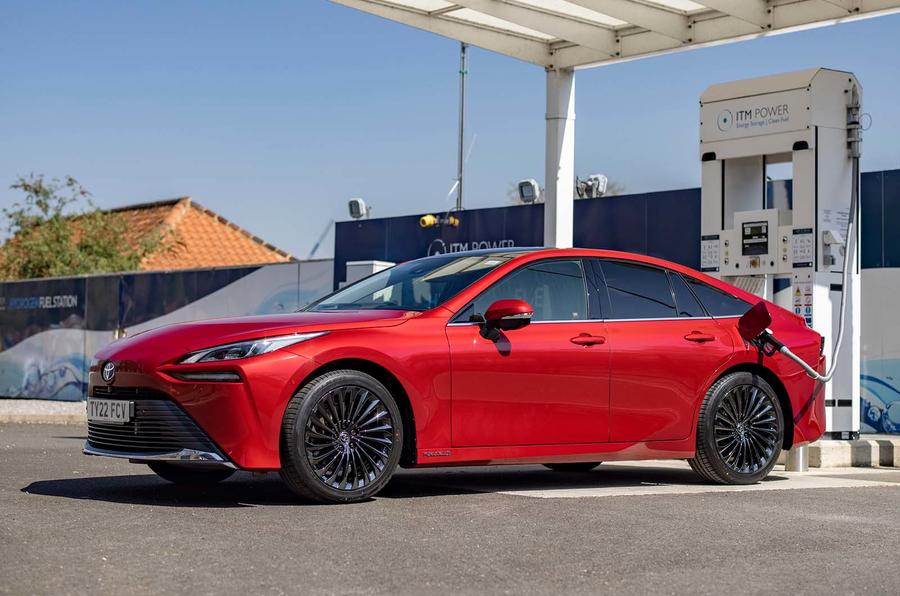Some consider hydrogen cars to be more efficient than other powertrains, as hydrogen power uses between 40-60% of its fuel’s energy with a 50% reduction in fuel consumption. It’s not uncommon to see around 400 miles of travel on a single tank when using hydrogen.
Unlike EVs, the range of a hydrogen car is not impacted by outside temperatures.
Cons of hydrogen cars
While hydrogen cars can be more efficient and environmentally friendly for the driver, there are some drawbacks.
Emissions from the tailpipe might be zero, but there are significant environmental challenges with producing hydrogen on an industrial scale.
Producing hydrogen at this level uses a significant amount of fossil fuels. According to tyre giant Pirelli, as much as 10kg of CO2 is produced for every kilogram of hydrogen.
There are methods of producing hydrogen that involve using renewable energies, but these are currently far more expensive. Denmark, for example, produces hydrogen from wind, while Iceland makes use of geothermal energy to produce the element.
Hydrogen cars are also quite expensive to buy due to their complexity, and obviously, the small number of refuelling stations is a significant black mark against this modern technology.
The future of hydrogen vehicles
Currently, hydrogen cars aren’t quite viable for the broader public. There are simply too few filling stations, and the hydrogen itself isn’t yet commercially or environmentally viable to produce en masse.
But with investment from the UK government aiming to accelerate the implementation of hydrogen vehicles, we could see more car makers turn their efforts to this modern technology in the coming years.
One such company hoping to drive the production of hydrogen vehicles is Williams Advanced Engineering, which revealed a platform for hydrogen electric vehicles in 2023.
It says the platform features a “cutting-edge” H2 fuel-cell system and a liquid-cooled battery pack with up to 576bhp available.

